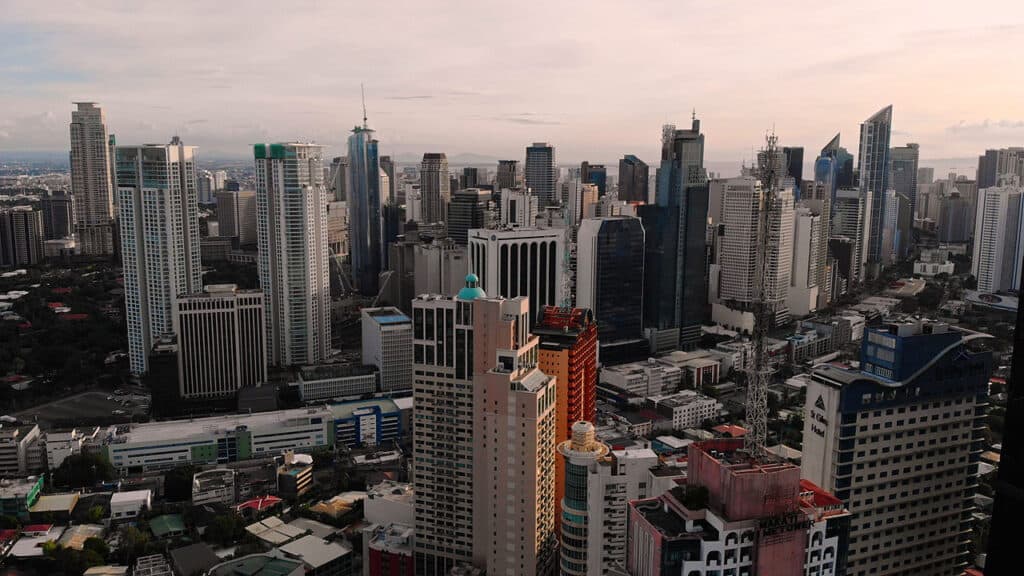
THE OFFICE SPACE vacancy rate in Metro Manila is now projected to drop to 5.7% by 2027, driven by the growth of the information technology and business process management (IT-BPM) sector, according to real estate services and investment firm CBRE.
This revised estimate is slightly higher than the 5.4% vacancy rate projected in the fourth-quarter briefing in February.
CBRE Philippines Country Head Jie C. Espinosa said that this projection is based on the Information Technology and Business Process Association of the Philippines forecast of an 8.5% annual increase in full-time employees.
“It will also be contingent on the traditional office space takers or non-business process outsourcing segment not dropping in terms of share of demand quarter on quarter, which usually is roughly around 30%,” Mr. Espinosa told BusinessWorld during a video call on June 8.
CBRE maintained its forecast of an 18.8% vacancy rate for 2024 and adjusted its projections to 14.9% from 15.1% for 2025 and 10.9% from 10.6% for 2026.
Mr. Espinosa said CBRE assumes that 30% of the market activity each quarter will continue to be driven by non-business process outsourcing companies making flight-to-quality decisions.
For the first quarter, IT-BPM led the demand with 52%, followed by 29% of traditional offices, 13% of Philippine Offshore Gaming Operators (POGOs), 4% for agile, and 2% for others, respectively.
CBRE reported that the office vacancy rate dropped to 19% in the first quarter of this year, down from 20.4% in the same period last year.
Mr. Espinosa said this was buoyed by transactions from shared services companies or global in-house centers setting up their back-office operations in the country, rather than typical third-party outsourcers.
“They then go for premium office space and that’s why if you look at most of those transactions happened in grade A buildings mostly in Fort Bonifacio but also in Makati,” he added.
Vacant office space decreased to 822,500 square meters (sq.m.) in the first quarter, with Makati accounting for 204,200 sq.m. and Fort Bonifacio for 127,900 sq.m.
For the first quarter, the firm recorded 128 transactions totaling approximately 1,536 sq.m., down from 133 transactions in the previous quarter.
According to CBRE, the Bay Area, which had a vacancy rate of 30.1%, has rebounded from its lowest occupancy point in the first quarter of 2023 and is no longer considered an underperforming area of Metro Manila. “The steady re-infusion of close to 80,000 sq.m. of POGO demand in this sub-district is bringing it close to sub-30 levels.”
In the first quarter, the firm observed the largest transaction in both provincial and Metro Manila areas was POGO occupying 17,900 sq.m. in the Bay Area.
However, Mr. Espinosa noted that POGO transactions still account for less than 10% of the market share. While they will have an impact on certain subdistricts, particularly in the Bay Area, it is not expected to create a “very seismic impact” as it did at the start of the pandemic, he said.
Currently, Metro Manila has a total supply of 1.707 million sq.m. and anticipates an additional 528,300 sq.m. in new developments for 2024, including the completion of projects like One Filinvest in Ortigas, Southfield in the Bay Area, and Park Triangle North in Fort Bonifacio.
“Focusing on the headline rates, it’s been mostly steady. Of course, there will be certain areas that will see a drop because you know vacancy will continue to be a factor,” Mr. Espinosa said. — Aubrey Rose A. Inosante
If you like this article, share it on social media by clicking any of the icons below.
Or in case you haven’t subscribed yet to our newsletter, please click SUBSCRIBE so you won’t miss the daily real estate news updates delivered right to your Inbox.
The article was originally published in Business World.







More Stories
Vista Land Celebrates 50 Years with Sandiwa: An Event Honoring Leadership, Legacy, and the Filipino Dream of Homeownership
Vista Land Celebrates Love Month in Ilocos Region
Vista Land Bridges Cebuano Heritage and Progress with Valencia by Vista Estates